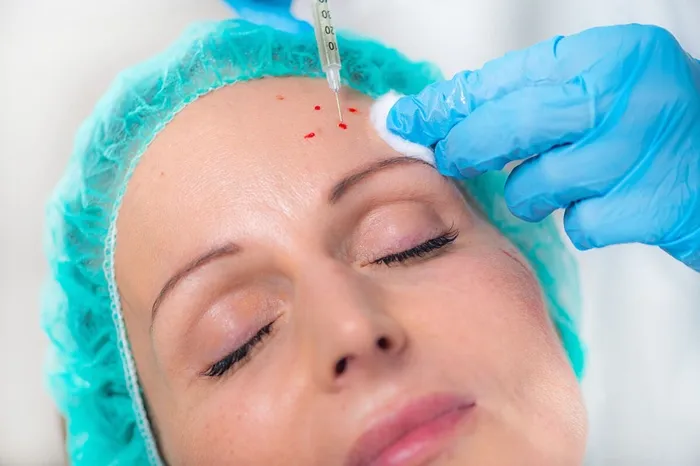Both PRP injection and PRP – combined microneedling are popular methods used in hair restoration, skin rejuvenation, and other aesthetic and medical treatments. Determining which approach is better depends on various factors, including the treatment goals, patient preferences, and the nature of the condition being addressed.
Understanding PRP Therapy
PRP therapy involves using a patient’s own blood, which is processed to concentrate platelets and growth factors. These components are then applied to the scalp or skin to promote healing and tissue regeneration. PRP can be delivered through direct injections or combined with microneedling for enhanced absorption.
PRP Injection
Mechanism and Process
When using PRP injection, the platelet – rich plasma is directly administered into the target area using a syringe and needle. This method allows for precise placement of the PRP, targeting specific areas of concern. For example, in hair restoration, the injection can be focused on areas with thinning hair or bald patches, delivering growth factors directly to the hair follicles. In skin treatments, it can be injected into areas with wrinkles, fine lines, or acne scars.
Advantages
Precision: The ability to accurately place the PRP in the desired location is a significant advantage. Specialized techniques can be used to ensure that the PRP reaches the appropriate depth within the tissue, maximizing its effectiveness.
Quick Procedure: Generally, the injection process is relatively fast. This is beneficial for patients who are short on time or prefer a more straightforward treatment with minimal disruption to their schedule.
Suitability for Specific Conditions: For deeper – seated issues or areas where a concentrated delivery of PRP is required, such as in the treatment of certain tendon injuries in orthopedics, injection may be the preferred method.
Disadvantages
Potential Discomfort: Some patients may experience pain or discomfort during the injection, especially if a larger needle is used or if multiple injections are required in a single session.
Limited Skin Penetration: When used alone for skin treatments, the injection may not fully address the superficial layers of the skin, which can be important for improving overall skin texture and appearance.
PRP with Microneedling
Mechanism and Process
Microneedling involves using a device with tiny needles to create micro – injuries in the skin. These micro – injuries trigger the body’s natural healing response, stimulating collagen production. When combined with PRP, after the microneedling procedure, the PRP is applied topically to the skin. The micro – channels created by the needles allow the PRP to penetrate more deeply into the skin layers, enhancing its absorption and effectiveness.
Advantages
Enhanced Absorption: The micro – channels from microneedling provide a pathway for the PRP to reach deeper into the skin, increasing the contact between the growth factors and the skin cells. This can lead to more significant improvements in skin texture, tone, and the reduction of fine lines and wrinkles.
Stimulation of Collagen Production: The combination of microneedling – induced collagen synthesis and the growth factor – rich PRP creates a synergistic effect. This dual action can result in more substantial and long – lasting results in skin rejuvenation compared to using PRP injection alone.
Gentler for Some Skin Types: For patients with sensitive skin, the microneedling process can be adjusted to be less invasive, making it a more tolerable option compared to the potential discomfort of injections.
Disadvantages
Lengthier Procedure: The combination treatment takes longer as it involves both the microneedling process and the application of PRP. This may be a drawback for patients who are looking for a quicker treatment.
Higher Risk of Infection: With the creation of micro – injuries in the skin, there is a slightly increased risk of infection if proper hygiene and aftercare are not followed. This requires patients to be more diligent in their post – treatment care to avoid complications.
Which Method Is Better?
The choice between PRP injections and microneedling with PRP depends on individual needs and preferences.
PRP Injections: Ideal for those seeking a more direct approach to delivering growth factors, particularly for hair loss and deep skin issues. This method is also preferred by those who do not want to perform treatments at home.
Microneedling with PRP: Offers a less invasive option with potentially enhanced absorption of growth factors. It is suitable for those looking to improve overall skin texture, reduce acne scars, and address other skin imperfections. Microneedling can also be done at home, making it a more convenient option.
Conclusion
Both PRP injections and microneedling with PRP offer effective solutions for hair loss and skin rejuvenation. PRP injections provide a direct and targeted approach, while microneedling with PRP enhances absorption through micro-injuries. Combining both methods often leads to the best results, leveraging the benefits of each technique. If you are considering PRP therapy, consulting with a qualified specialist is essential to determine the most appropriate treatment plan based on your specific needs and goals.
Related topics:


